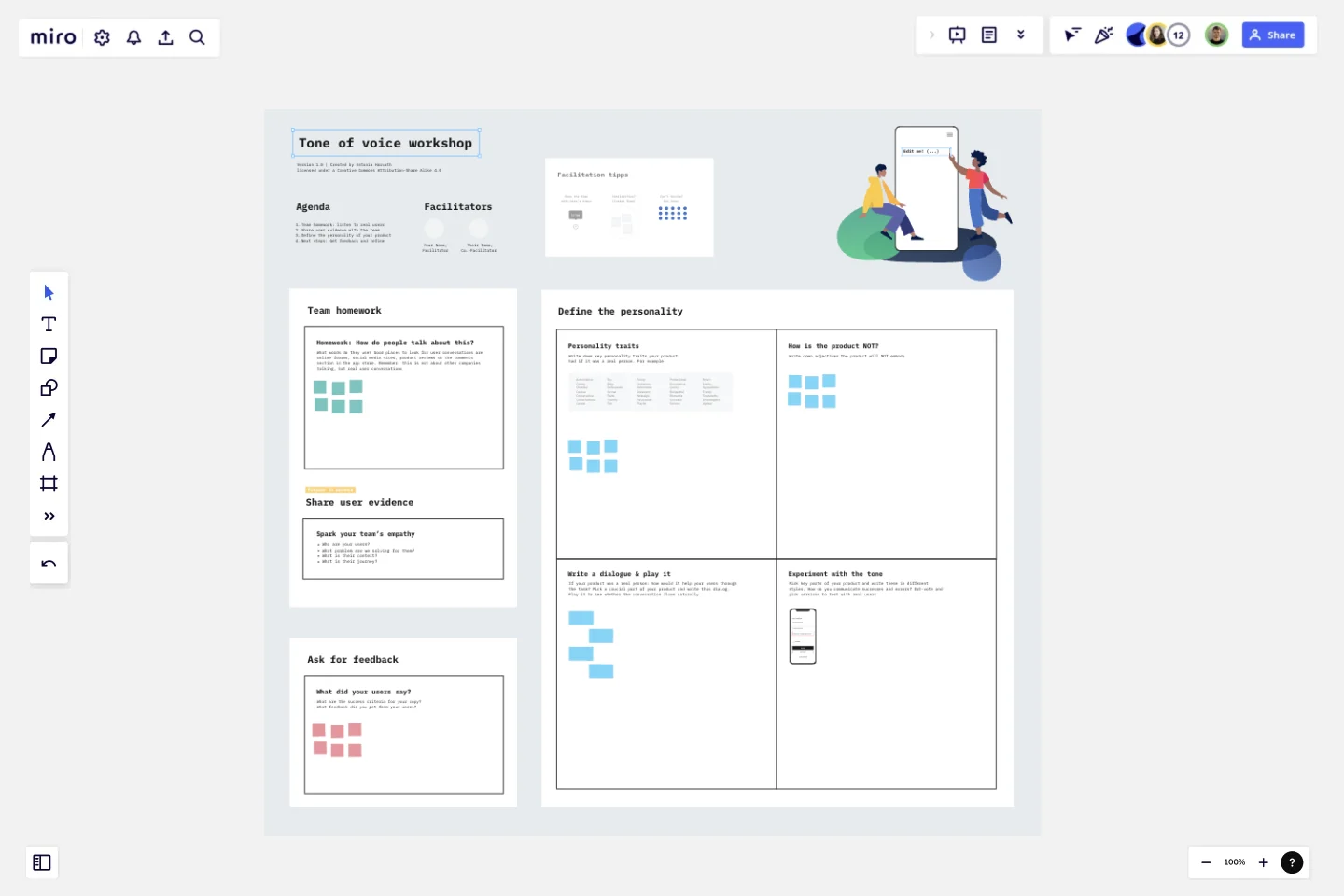Product tone of voice
Product teams come in all shapes and forms, but they often don't have a dedicated writer.
Writing the text for products often happens on the fly and the result does not always support users best. This workshop is for designers, product managers, and anyone who wants to improve the way their product communicates with its users.
Outcome
You will have a product that people understand and ultimately want to use. Your product will sound human and will enable your users to get to their goal smoothly. You will know when this is the case because you will test it with real people and refine it.
Plus
This workshop will save your team hours when writing because they’ll know how the product should sound in advance.
This template was created by Antonia Horvath.
Get started with this template right now.
Crowd Sourced Cause and Effect
Works best for:
Fishbone Diagram, Problem solving
The Crowd Sourced Cause and Effect template leverages collective intelligence to identify root causes of problems. By involving multiple team members, you can gather diverse perspectives and uncover insights that might be overlooked. This collaborative approach ensures a comprehensive analysis and fosters team engagement.
Async Roadmap Sharing
Works best for:
Roadmaps, Planning, Mapping
Async Roadmap Sharing template facilitates asynchronous collaboration on roadmap planning and execution. By providing a centralized platform for sharing updates, feedback, and insights, teams can ensure alignment and transparency across distributed teams. This template promotes flexibility and inclusivity, allowing team members to contribute to roadmap discussions at their own pace and asynchronously across different time zones.
User Story Map Template
Works best for:
Marketing, Desk Research, Mapping
Popularized by Jeff Patton in 2005, the user story mapping technique is an agile way to manage product backlogs. Whether you’re working alone or with a product team, you can leverage user story mapping to plan product releases. User story maps help teams stay focused on the business value and release features that customers care about. The framework helps to get a shared understanding for the cross-functional team of what needs to be done to satisfy customers' needs.
Product Inception Canvas
Works best for:
Product Management, Planning
The Product Inception Canvas template facilitates collaborative sessions for defining product visions and strategies. By exploring product goals, user needs, and market opportunities, this template aligns teams around a shared vision. With sections for defining product features, prioritizing initiatives, and setting success criteria, it provides a structured framework for product inception. This template serves as a launchpad for innovative product ideas, guiding teams through the initial stages of product development and setting the foundation for success.
Milestone Chart Template
Works best for:
Project Management, Strategic Planning, Project Planning
When your team is collaborating on a large project, keeping track of the many tasks and multiple timelines can be a challenge. That’s why you need a milestone chart. These visual representations of important project events will make it simple for your team to stay on schedule and reach goals on time. And it’s so easy to get started — just determine the major milestones, use our template to create a milestone chart, and define the key dates and deliverables each milestone will require.
BPM
Works best for:
Diagramming
The BPM (Business Process Management) template is a visual tool for modeling, analyzing, and optimizing business processes. It provides a structured framework for documenting process flows, identifying bottlenecks, and improving efficiency. This template enables organizations to streamline operations, enhance productivity, and drive business performance. By promoting process transparency and agility, the BPM template empowers teams to achieve operational excellence and deliver value to stakeholders.
